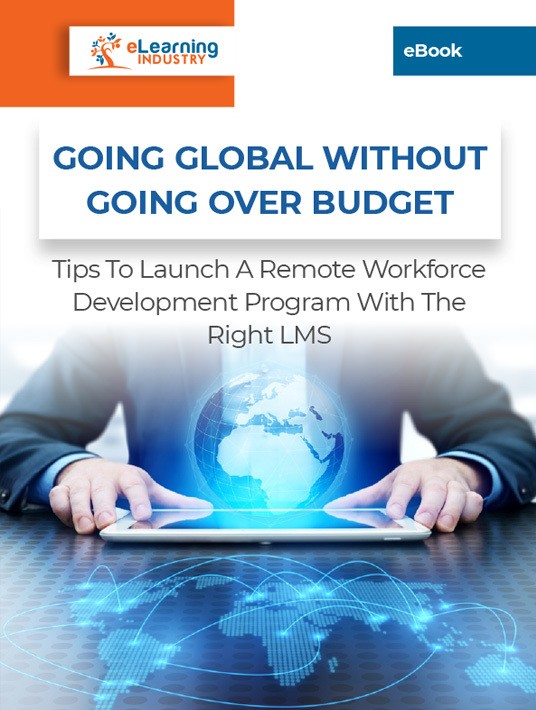Budgeting Tips To Implement With An LMS For Workforce Development
We all know people who drive hundreds of miles for meager discounts. They save a lot at the till, but most of their savings get swallowed up by fuel. After all, you still have to drive there and back. Some organizations make a similar mistake when purchasing their new LMS for workforce development. They focus on the 'low' cash price without considering 'hidden' expenses. So, what are some concealed costs to include while budgeting for LMS? After all, you don’t want any surprises.

1. Account For All Active Users
Many LMS for workforce development are billed per user. So, you’ll pay—say $200 for the first 20 users, and an extra $5 for every additional user. If it’s cloud-based, you may even have a user cap within your price point. This means you may overlook certain employees. If they’ve left the company, or if they have limited access, you might still include them in your database. Do a regular user review and remove lapsed users. You could consider a different package for low-volume users. Or put them on a separate program e.g. give them a linked mobile app. This could lower your per-user fee. That said, it’s best to over-estimate instead of having to pay overage fees. For instance, you unexpectedly hire 5 new employees, which puts you over the cap.
2. Consider Upkeep Costs
Any kind of software needs an upgrade eventually, even if you coded from the keyboard up. A workforce development LMS might come with a set number of updates before the price goes up. Or you might be asked to pay a maintenance fee that’s included in your monthly subscription. While a locally-installed and/or self-built LMS may need outsourced staff for upkeep, so you have to budget for their consultancy fees. And if your in-house IT can handle it, you still have to account for their billable hours. Upkeep usually involves sweeping and cleaning your servers to remove malware. It also involves backing up key data and performing software updates. All that takes time and costs money. Plus, there’s the cost of content maintenance to consider. For example, you need to update your course to reflect new compliance rules. Or purchase additional templates, image bundles, and other assets.
3. Think About Added Features
Your LMS has a set of in-built tools, and each one has its own pricing system. Some workforce development LMS features are standard—mostly analytics and text editors. But if you have specific needs, you might have to (a) install a compatible plug-in, or (b) buy complimentary software. For example, many LMS allow you to upload video, or to embed existing content (from YouTube). But you may want to shoot your own videos and record original audio. In which case, you need software with an editing booth so you can polish your footage. If your sound booth isn’t built in, you’ll have to pay extra. And even if you find free software online, you’ll need (paid) manpower to customize it for your system. Ask the vendor about which features are included in the package and request an itemized estimate. You should also verify that the new workforce online training LMS is compatible with your existing tools to avoid replacement fees.
4. Focus On The Hosting
If your LMS comes 'in a can' then it’s likely to be hosted on the cloud. In that case, hosting fees are included in your subscription. If you purchased the entire LMS, you might still have to license it once a year. Plus, you may need to buy your own servers or pay for an independent web host. You could append it to the hosting package of your current website. Just remember the increased bandwidth usage will raise your monthly 'premiums.' Again, if you invest in free open-source software, it still requires hosting and techie labor. So, it’s not as free as you think.
5. Pay For Online Training Staff
By this, I mean the staff that builds and maintains your online training courses. As well as those who implement the Learning Management System. They could be content experts or techie members of the L&D team. If this is a new LMS, you might have to hire dedicated staff to manage it. Best case scenario, you can augment the job descriptions of existing staff and add it to their docket. You’ll have to add to the pay as well, so that goes in your workforce development budget. Also, if you’re using your software to spot, nurture, and promote new readers, consider their new positions. As they rise up the ranks, they’ll require more resources and a higher job grade.
6. Account For Learning Curve Costs
It’s not just the back-end developers and LMS admin team who needs to master the new Learning Management System. Your employees need to be able to use the tool to access crucial online training tools. This means that you’ll have to set aside time and payroll hours to the LMS learning curve. For example, it might require a 2-hour workshop that shows them the ropes so that they’re able to log in and overcome the most common obstacles.
A lot more goes into L&D budgets than you’d think. And the real trouble starts when you get a budget approved then realize all the expenses you overlooked. Expenses like dormant or infrequent users, upkeep, maintenance, upgrades, hosting, additional features, and specialized staff. Before you make your pitch to Accounts, factor these all in and leave a contingency on top. You always need a little wiggle room in the expense sheet for unexpected fees.
Do you want to discover more about the benefits a new LMS can bring to your business? Download the eBook Going Global Without Going Over Budget: Tips To Launch A Remote Workforce Development Program With The Right LMS, explore ways to bridge the gaps and enhance your business strategy.







